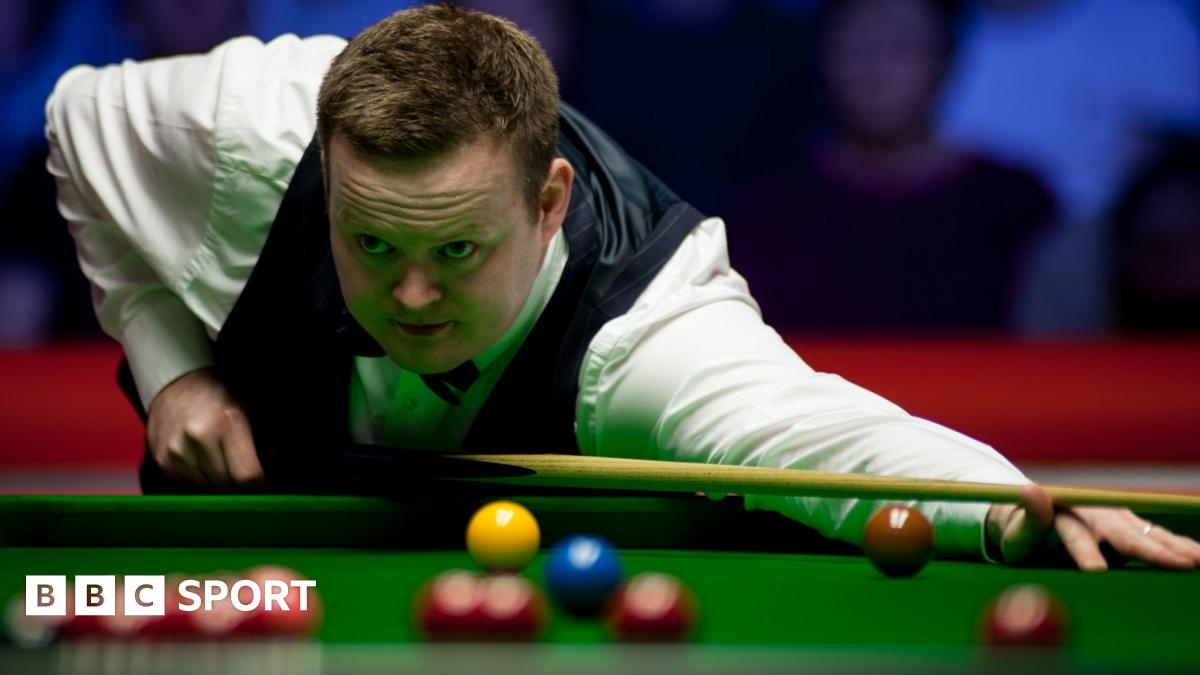https://greenbaize1972.com/the-high...2f0QI0-37UVWKv09_xdHSFpI8JSEocQBg2wuWYbCbYR0w :
Snooker Loopy
The Trials and Tribulations of the Baize
The Highest Break
By Elliott West
Introduction
You have heard the one about Alex Higgins breaking his leg before the 1989 Irish Masters but have you heard the story about Willie Thorne breaking both legs? Willie or WT as we fondly remember him, sadly passed away last year after a battle with leukaemia. However his legacy remains for all to see, from helping kick start the career of Mark Selby with his brother Malcolm in the family run club in Leicester to having an enviable record of making over 200 maximum breaks and 100 centuries over nineteen seasons. A player who won the 1985 Classic and reached the final of 1985 UK Championship and the 1986 British Open as well as six non-professional titles and both Under 16 and Under 19 titles.
The Incident
In 1981, Willie Thorne was involved in a very nasty accident when he went go-karting. As a result of a high speed crash, Thorne broke both of his legs and had to have them put in plaster. Most people would have taken it easy and observed a period of recuperation but anyone who knew WT are aware that was not his style. This man didn’t like to be inactive for long and was always keen to get back on the saddle at the earliest possible moment.
Shortly after his accident, an opportunity arose when a diary event materialised. A host role at the North-East v South-East Post Office team billiards championship at his club in Leicester ensued and during the competition, Willie was persuaded by the organiser, John Posner to play a couple of frames against a club member during a break between rounds. WT still had one leg in plaster at this time. Knowing the popularity of the event, the second year it was being held at his club, Thorne jumped or maybe hobbled at the chance.
An electric performance unravelled in-front of a packed audience despite arriving cold to the table. WT promptly compiled a maximum break to the pleasure of the crowd, his thirteenth in his career and was one that must have given Thorne extreme pleasure knowing that he drifted in and out of position several times during the frame.
“That didn’t bother him, he simply cocked his plaster leg over the table to get a better sighting of the ball”.
John Posner
Summary
Willie was a gentleman who I was lucky to be a friend of. Despite the negative press he received for his inner demons, the WT I knew was someone who was always at the other end of a phone for you, encouraging and inspiring me in and out of his presence. It is strange but even though he has gone, I still think he watches over me and sometimes hear that distinctive voice giving me a piece of advice.
This incident is typical of Thorne and his sheer love for snooker. Even when he was in acute pain, he was willing to play and entertain. I know this first hand, having been lucky enough to spend some time with my pal at the World Seniors in Sheffield, the last time I saw him before his passing. Even when Willie was very ill, he was still speaking to friends and family on the phone and was always interested about how you were. He had a big heart and was never afraid to shed a tear. A dear friend who I never grow tired of writing about.
Willie Thorne’s Career Achievements
1969 National Under-16 Snooker Championship (runner-up)
1970 National Under-16 Billiards Champion & National Under-16 Snooker Champion
1971 National Under-19 Billiards Champion
1972 National Under-19 Billiards Champion
1973 National Under-19 Billiards Champion & National Under-19 Snooker Champion
1975 English Amateur Snooker Championship (runner-up)
1980 Pontins Open Champion
1981 Pontins Professional (runner-up)
1984 Pontins Professional Champion, World Doubles Championship (runner-up with Cliff Thorburn) & Warners Open (runner-up)
1985 Mercantile Credit Classic Champion & Scottish Masters (runner-up)
1986 Hong Kong Masters, Matchroom Professional Championship, Pontins Professional (runner-up), Canadian Masters (runner-up), Irish Masters (runner-up), British Open (runner-up)
1987 Kent Cup, Irish Masters (runner-up), Irish Masters (runner-up), Pontins Professional (runner-up), Matchroom Professional Championship (runner-up)
1989 New Zealand Masters
1994 Australian Open (runner-up)
2000 World Seniors Masters
Willie Thorne in plaster with crutches
God bless Willie Thorne and that story made me smile and I will tell you why .
A mate of mine had a 50p E/W bet on the Greyhounds and he said if this last one wins meet me in the pub , we're getting drunk so it was a 4 timer and they all won at huge odds , last winner was the shortest odds @ 9/2 and he was true to his word and got me drunk , thing was I tripped on a kerb and next day my left foot was squidgy , think I bust it . No sooner was it healed and I did the same with the right foot and had to use crutches .
Big Tam our Pool Team captain had bought tickets to a Willie Thorne exhibition at The Crucible in Clydebank and Willie took time out to ask me what I done to myself and I told him . I never had the sense to ask for an autograph .
If you get the chance to go to an exhibition , just go , they are good fun !




 www.facebook.com
www.facebook.com





















